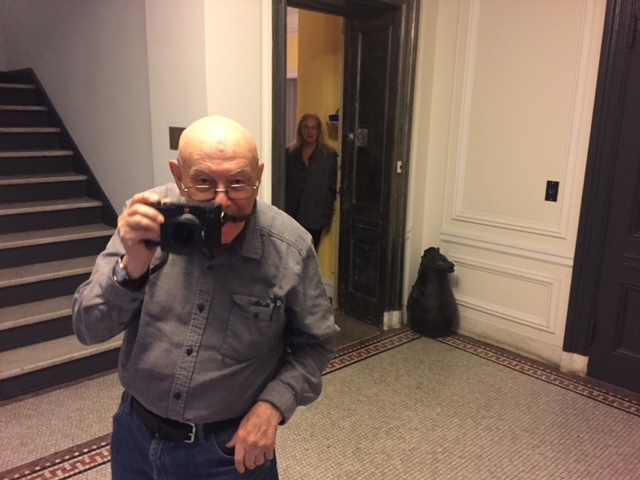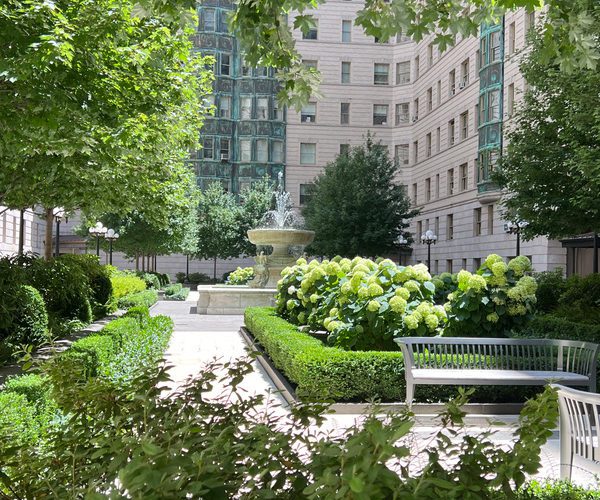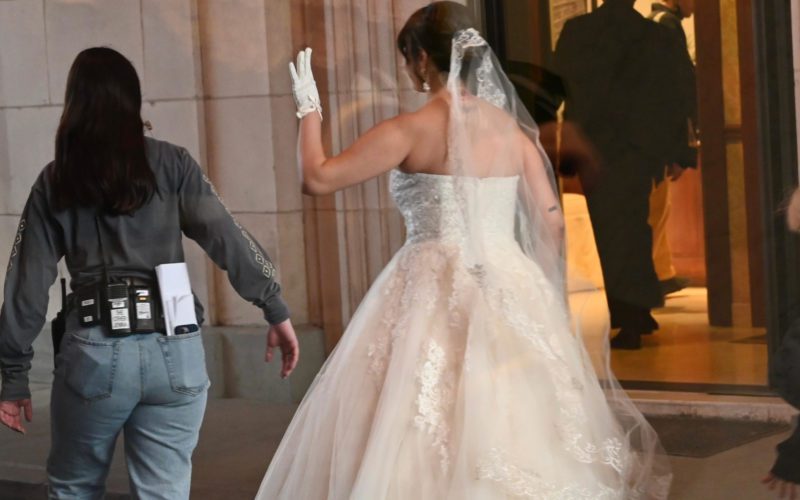In the exhibition “The Way Back,” the photographer presents unseen outtakes from his nearly 70-year career as a chronicler of American life.
Arthur Lubow, The New York Times, Aug. 24, 2023
Breathtakingly fast and painstakingly slow: Before the introduction of the digital camera, a photographer worked in those parallel time frames. The click of the shutter was instantaneous, but then the film had to be developed, the contact sheets or color slides reviewed, and the selections made for printing.
Pressed for time, a working photographer typically made these decisions hurriedly. In old age, there is time for reconsideration. Bruce Davidson, who turns 90 next month, has been reviewing his archive for the last eight years. In “The Way Back,” the title both of an exhibition now at the Howard Greenberg Gallery, in New York, and a more compendious book to be published this fall, he is presenting photos he overlooked, putting them on public view for the first time.
In a 2015 interview, Davidson named for me some photographers he thought had taken the art form to “a new departure point”: Eugène Atget, Henri Cartier-Bresson, Robert Frank, Diane Arbus. He did not include himself. He knows he has followed trails blazed by pioneers. What makes him remarkable is the empathy that won over his subjects and the devoted persistence of his investigations.
Frank, who is probably Davidson’s greatest influence, restlessly sought to portray scenes and people new to him; it is one reason he did not enjoy or succeed at the lucrative task of crafting photo essays for Life magazine. In contrast, Davidson has preferred to mine the same subject for months or years, getting so close to people that you come to feel you know them yourself.
Bruce Davidson: The Way Back
Through Sept. 16, Howard Greenberg Gallery, 41 East 57th St, Manhattan; 212 334-0010, howardgreenberg.com
Bruce Davidson: The Way Back
Pat Kieran, Photograph Magazine, September 2, 2023
For most of his nearly seven-decade career, Bruce Davidson has photographed people on the edges of society. With directness and empathy, he places himself eye-to-eye with those who have been overlooked. For The Way Back, his exhibition at Howard Greenberg Gallery through September 16, Davidson took another look into his vast archive to select previously unpublished images from his best-known series.
As the exhibition title suggests, Davidson and photography go way back. He writes that at the age of ten, “Most boys my age had a dog. I had a camera.” From the beginning, he considered the camera not just a tool, but a companion. Together, they made Brooklyn Gang, 1959; Time of Change, 1961-65; East 100th Street, 1966-68; and Subway, 1977, all of which appear here, gorgeously printed and interspersed with a handful of Welsh coal miners, New York street scenes, and Mexican markets. He immerses himself in these worlds, building trust and connection with his subjects.
Davidson is attuned to the ways in which city people living on top of each other in cramped apartments and moving among the swirling masses carve out intimate spaces. Cozied up underneath the Coney Island boardwalk, members of a Brooklyn gang cast penetrating looks over long drags on cigarettes – the eternity and fleetingness of youth in a single image. On subway platforms and busy streets, Davidson crams bodies into the frame, heightening the sense of claustrophobia. Even within such chaos, he connects with his subjects, locking eyes through his lens. Those less familiar with his work would be surprised to learn that the images in this show are not included in his books, so seamlessly do they fit into his oeuvre. The photographs are classic Davidson – compassion bubbling beneath the grit. With a lifetime of images to choose from, the photographs on view reflect his most famous series, spanning just 20 years, 1957 to 1977.
The Way Back: Bruce Davidson
Musée: Vanguard of Photography Culture
Max Wiener, July 13, 2023
Praising him would be semantical, and pointing out his genius would be comically familiar. In The Way Back, however, Bruce Davidson’s true artisanry is amplified, and the walls of the Howard Greenberg Gallery are adorned with what could be his finest batch of work. Selected over twenty years from 1957-1977, the series, apart from showcasing some of his most iconic images, shows some of Davidson’s more overlooked works, highlighting the unmatched perspicacity of his photography. The series opened on June 23 and is scheduled to run until September 16, giving viewers ample time to fully absorb its mastery.
Rarely can a photographer invisibly place themself in the world they’re capturing. Automatically, the world becomes a pseudo-society of reality. While this is all said and true, certain artists seem to defy this narrative, inserting themself into their captured world under an invisible cloak; Davidson is one of these artists. Seldom do we see such raw humanism in contemporary photography, where subjects are completely unphased by an outside presence invading their oeuvre. He aligns himself with the same school of thought as Robert Frank or Frank Herzog, where the world shown in the film is as we intended. There is no posing or Hollywood lighting, just raw, unfiltered action captured with the all-seeing eye of a deity. Among his celebrated works being shown are selections from his East 100th Street series, where he captures the daily activities of a Harlem block from 1966-1968. In perhaps one of the area’s most tumultuous and revolutionary periods, we see a delicate touch from Davidson, showing the mundane humanity of it all and the nooks and crannies of a world hitherto unexplored.
East 100th Street, New York, 1966

Bruce Davidson, East 100th Street, New York, 1966. ©Bruce Davidson / Magnum Photos. Courtesy Howard Greenberg Gallery



